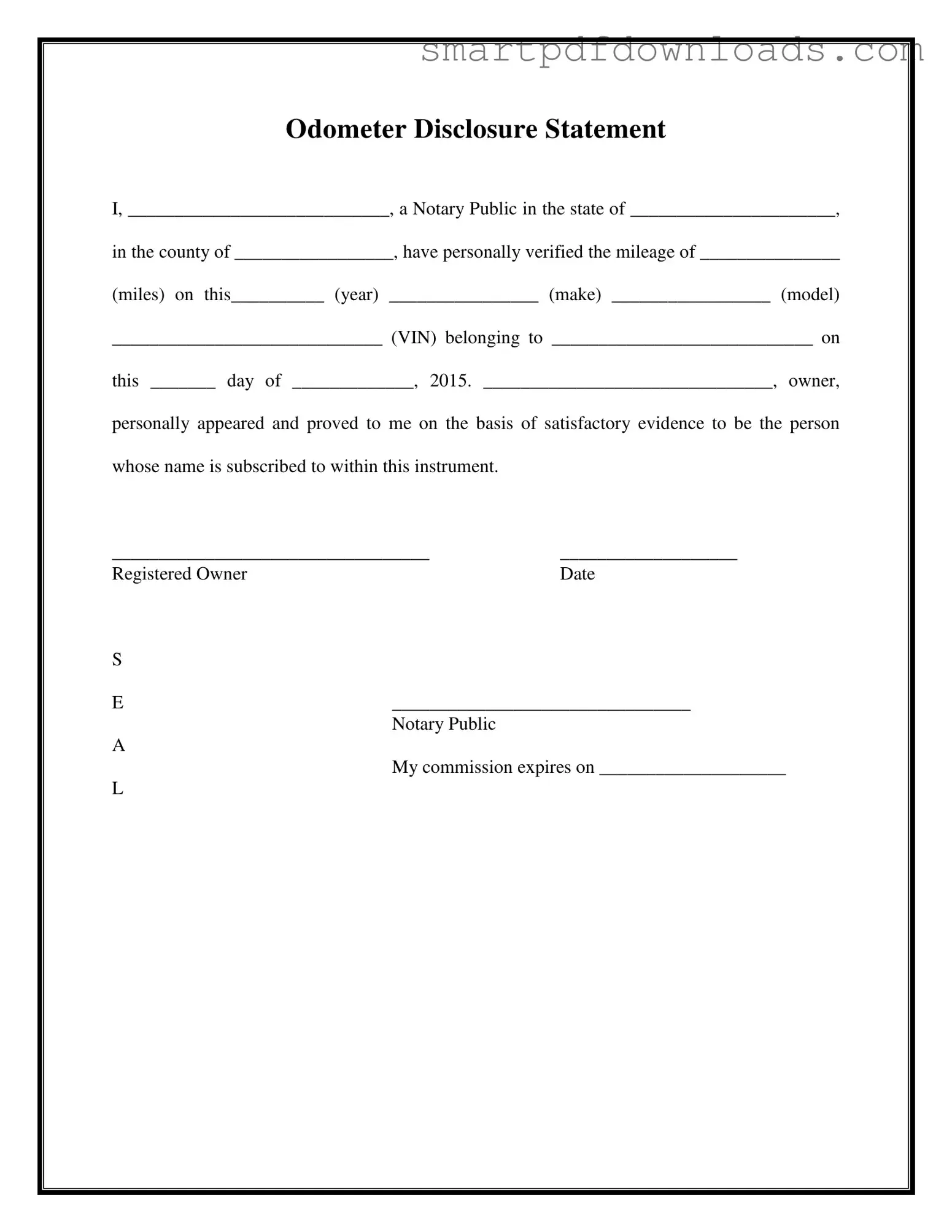Notarized Odometer Statement Form
The Notarized Odometer Statement form is a document used to disclose the mileage of a vehicle at the time of sale. It is signed by a notary public, who verifies the information provided by the vehicle owner. This form helps protect both buyers and sellers by ensuring accurate mileage records.
Edit Notarized Odometer Statement Online

